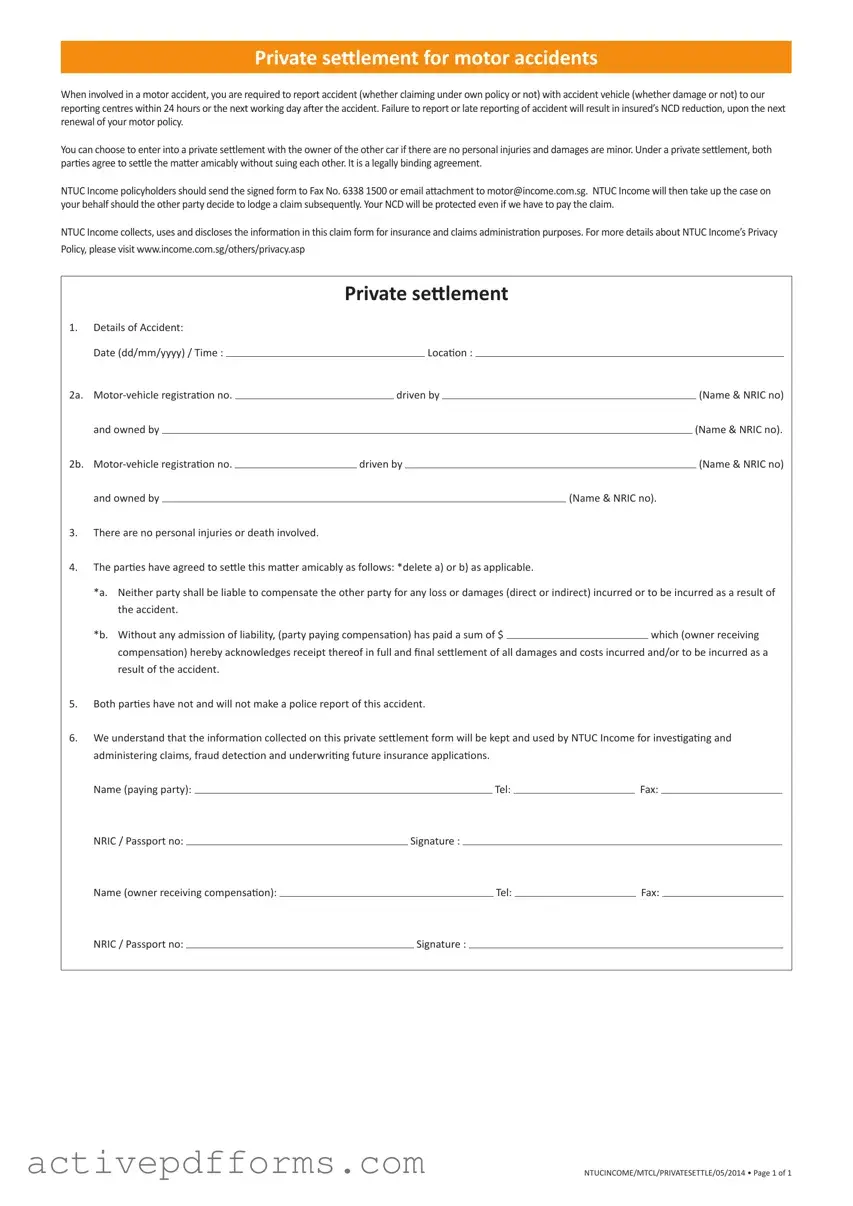- What is a Private Settlement for Motor Accidents?
A private settlement for motor accidents is an agreement between the parties involved in a minor vehicular accident to settle the matter amicably without resorting to legal action. This usually involves an understanding that neither party will seek compensation from the other or will agree on a compensation amount to be paid without admitting liability. It's a legally binding agreement meant to resolve disputes quickly and without involving insurance claims, provided there are no personal injuries.
- When should you report an accident to the reporting centers or your insurer?
Regardless of your decision to enter a private settlement, you're required to report the accident to the reporting centers or your insurer within 24 hours or the next working day after the accident occurs. This is crucial because failure to do so can result in a reduction of your No-Claim Discount (NCD) upon the next renewal of your motor policy.
- What happens if you fail to report an accident on time?
If you fail to report an accident or report it late, you risk reducing your No-Claim Discount (NCD) when you renew your motor policy. The NCD is a discount given to policyholders for not making any insurance claims, signifying a good driving record. Late reporting can affect this benefit negatively.
- Can both parties agree not to file a claim against each other?
Yes, in a private settlement agreement, both parties can agree not to hold each other liable for any loss or damage resulting from the accident. This agreement must be mutual and can include terms where no compensation is sought by either party, or a specified compensation amount is agreed upon without any admission of liability.
- What is the role of NTUC Income in the private settlement process?
For policyholders of NTUC Income, once a private settlement form is duly filled and submitted to NTUC Income, the company may intervene on the policyholder's behalf if the other party decides to lodge a claim later on. NTUC Income will protect the policyholder’s NCD even if it has to pay out the claim.
- How should you submit the private settlement form to NTUC Income?
The completed private settlement form can be sent to NTUC Income via fax at Fax No. 6338 1500, or it can be emailed as an attachment to motor@income.com.sg. This ensures that the documentation is properly received, and the case will be taken up by NTUC Income if necessary.
- Why is it important to have a private settlement agreement in writing?
Having a private settlement agreement in writing is essential as it serves as a legal document that outlines the terms agreed upon by both parties. This can prevent future disputes or claims as it provides clear evidence of the agreement and the conditions that were mutually accepted.
- Will entering into a private settlement affect your NCD with NTUC Income?
Entering into a private settlement itself will not affect your NCD with NTUC Income. However, NTUC Income emphasizes that policyholders must report all accidents. If a claim is lodged by the other party later and NTUC Income handles it on your behalf, your NCD will still be protected, provided the settlement was conducted correctly.
- What personal information is collected in the private settlement process, and how is it used?
The private settlement form collects personal information, such as names, contact details, and identification numbers of both parties involved in the accident. NTUC Income uses this information for investigating and administering claims, detecting fraud, and underwriting future insurance applications. Ensuring the privacy and appropriate use of this information is guided by NTUC Income’s Privacy Policy.

